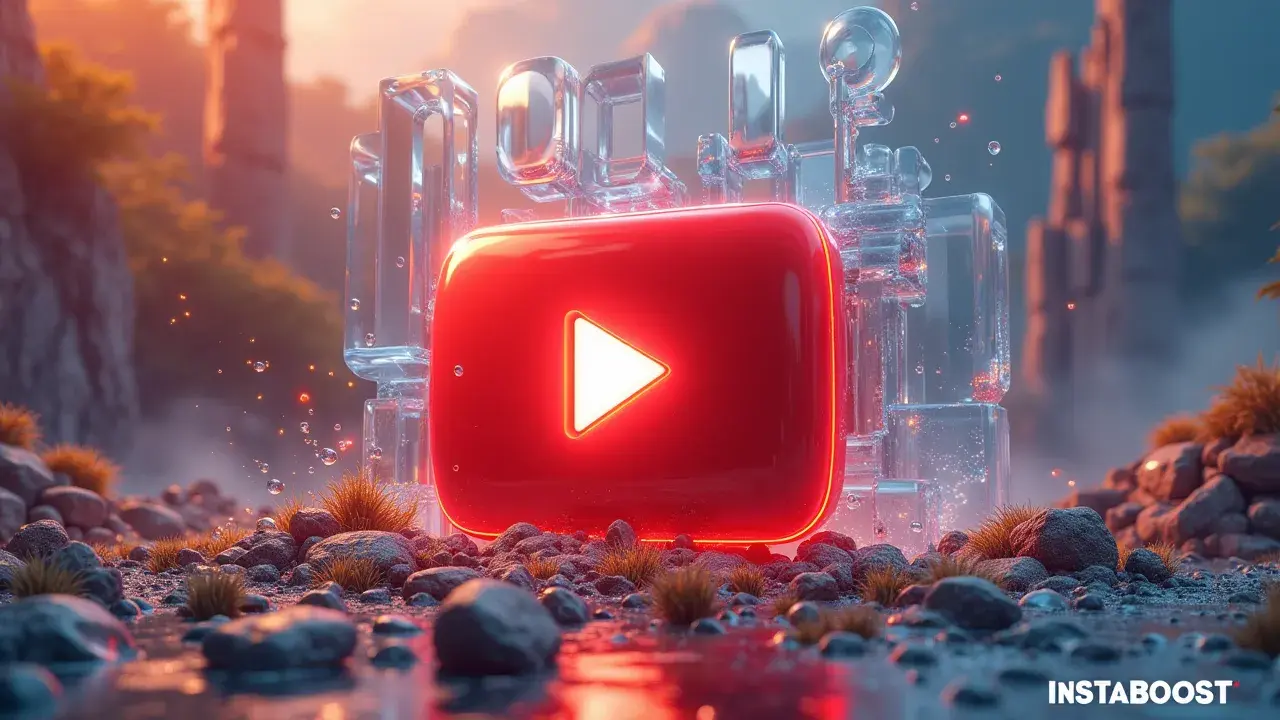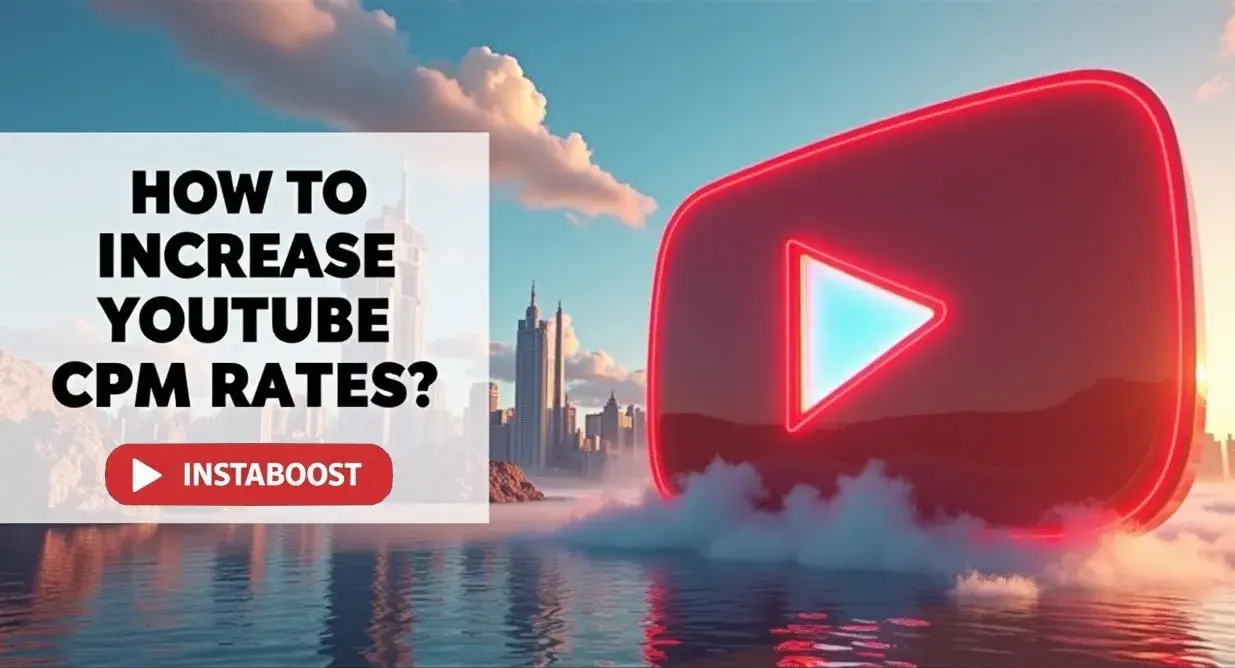How to Increase YouTube CPM Rates?
Raising YouTube CPM rates comes from matching content to high-intent audiences with identifiable buyer signals. Refine thumbnails and titles to secure a strong watch time hold through the first minute, and publish on consistent schedules so inventory feels predictable. Maintain a clean content taxonomy so advertisers can value segments clearly and bid with confidence. Track the first hour and watch time holds, then iterate to expand predictable reach and strengthen monetization over time.
Set the Stage for Premium Inventory
YouTube CPM isn’t random – it’s a market signal for how advertisers price your audience, your packaging, and your predictability. If you want higher rates, treat every upload like intentional ad inventory. Topics that map to buyer-ready moments pull in bigger campaign budgets – think “best [tool] for [use case]” instead of vague lifestyle vlogs – and they work best when the packaging holds attention through the first minute. Use thumbnails and titles that promise a clear outcome, then deliver it fast to lift watch time and retention signals. Keep a consistent upload window and a clean content taxonomy – series, playlists, clear niches – so media buyers can target with confidence.
Channels with organized libraries often see stronger YouTube CPM rates without massive spikes in views. Early momentum matters, so pair qualified targeted promotion with creator collabs that bring real comments and session growth; those social proofs tell the algorithm – and advertisers – that the video will scale, and tools you already know for boost YouTube video can be useful only when they align with genuine intent and audience fit. Keep your analytics clean: skip engagement bait and avoid mismatched audiences from broad giveaways. Run a simple testing loop for A/B thumbnails and opener hooks, and watch first-hour click-through rate, average view duration, and hold at 30 – 60 seconds.
If you add paid boosts, use reputable sources, match targeting to intent, and throttle spend to preserve retention and comment quality. This works when it amplifies a video already resonating organically. The non-obvious edge is that advertisers pay more for predictable outcomes than for occasional virality – so build repeatable formats and upload rhythms that make your next impression as forecastable as your last. Include “YouTube monetization” in tags and descriptions where it fits, but let the content do the heavy lifting.

Prove You’re a Safe Bet for Bigger Budgets
After you’ve seen enough flops, you start to spot what actually clicks. Buyers aren’t paying for views. They’re paying for confidence that their message shows up in the right context without surprises. That’s why credibility, not charisma, lifts YouTube CPMs. Give advertisers something they can underwrite: a clear content taxonomy that stays in defined lanes, consistent upload windows, and on-screen norms for language, claims, and disclosures that prevent brand-safety headaches. Share retention proofs, not platitudes – first-minute hold, average view duration, and end-screen CTR across the last 10 uploads.
Package that with clean analytics and you become easier to forecast, which attracts premium campaigns. Social proof matters, but not the vanity kind. Highlight real comments from qualified users, case-style chapters, and creator collabs where audiences demonstrably overlap with buyer-ready intent, and treat growth levers as stability tests rather than shortcuts, even when you explore options to reach more viewers on YouTube. If you run targeted promotion, use reputable placements and throttle for early momentum only when retention signals hold – then scale after the testing loop confirms no drop in watch time.
For sensitive niches, a short brand-safety reel that shows language filters, music licensing, and claim checks positions you as low-risk inventory. Add clear topics mapped to high-intent searches – comparison videos and practical how-tos – and your channel earns a spot on allowlists rather than broad keyword buys. The non-obvious edge is that predictability is negotiable – share a simple media one-sheet with audience demos, upload cadence, and a three-video arc aligned to a campaign flight. When advertisers see a plan they can mirror, they bid with confidence, and that’s when YouTube CPM increases start to compound.
Engineer Demand With Intent Signals and Predictable Reach
You don’t need a bigger plan – you need a cleaner one. Treat “raise YouTube CPM” like a system question. Align intent, hold attention, then scale the pieces that repeat without breaking. Start by reverse‑engineering buyer‑ready searches and the threads your audience already uses to compare solutions. Build each video around a specific decision moment and show the tradeoffs on screen within the first 45 seconds to lock retention signals. Set a predictable cadence – same days, same time blocks – and narrow your content taxonomy to two or three lanes advertisers can forecast against.
To compound CPM, pair every upload with targeted promotion matched to the topic’s intent; lightweight social proof, including likes that improve watch metrics, can stabilize early session behavior if you’ve already nailed the hook and pacing. Think qualified newsletter swaps, relevant subreddit threads, or a reputable ads test with tight placements to spark early momentum without muddying analytics. Real comments and creator collabs in adjacent niches help when you pre‑brief partners on language, claims, and mid‑roll timing so brand‑safety norms stay intact. Build a clean testing loop. Track first‑hour CTR, first‑minute hold, ad suitability flags, and RPM by topic cluster.
Promote the packages that stay stable and prune outliers that drag predictability. If you use paid boosts, keep them constrained to the geos and devices your organic audience already converts in. You’re telling the market what your inventory is, so signal quality over breadth. Make the buy obvious. Publish sponsor‑ready one‑sheets that map content lanes, upload windows, historical retention, and audience segments, and link that directly in descriptions. High CPM follows when an advertiser can match intent to a reliable slot and trust that your environment won’t surprise them.
Stop Worshipping Niches – Calibrate to Transactional Moments
I’m not burnt out – I’m just pre-toasted. Chasing a tighter niche as a path to higher YouTube CPMs wastes cycles and caps upside. What actually pays is proximity to purchase and the predictability to scale it. If you’re in “productivity,” don’t burrow into obscure subtopics. Map your series to the moments people Google right before they buy – setup, comparison, onboarding, and troubleshooting. That framing attracts higher-intent advertisers without tripping brand safety.
Pair those episodes with visible retention signals – tight cold opens, timestamped chapters, and a first-minute visual proof of value – so buyers see steady watch time in your analytics and can model outcomes. Then use qualified targeted promotion to spark early momentum on videos with buyer-ready keywords and collaborative segments with creators who rank for adjacent “best X for Y” searches. Those collabs bring real comments and audience overlap that advertisers treat as quality context, not fluff impressions, and treat any artificial spikes in engagement with skepticism even when people quietly explore tools like buy views for better analytics to pressure-test metadata.
If you run paid accelerants, stick to reputable placements with frequency caps and UTM discipline. That way you can separate discovery from durability and avoid spiky, low-confidence graphs. The punchline is simple: CPM rises when your content, packaging, and audience intent line up cleanly enough that a brand can underwrite reach without guessing. Keep upload windows consistent, disclosures visible, and claims verifiable to stay eligible for sensitive inventory. Test titles and thumbnails in a tight loop, but lock in only the variants that keep average view duration past the first minute. Scale those into playlists that promise predictable reach. The non-obvious bit is that breadth works when your taxonomy ties it to purchase-adjacent journeys – advertisers buy moments, not micro-niches.
Close the Loop: Turn CPM Wins Into a System You Can Scale
Don’t file this away – fold it into something new. Treat every higher-CPM upload as a repeatable blueprint, not a one-off win. Set a simple cadence: start by reverse-engineering a buyer-ready query, match it with a title and thumbnail built to hold a minute, and back it with targeted promotion from reputable sources to spark early momentum.
Then track what actually moved CPM – the query class, how close the offer sits to purchase, the retention curve, real comments that mention timing, and which creator collabs brought qualified viewers. Use that scorecard to greenlight the next three uploads that rhyme with the winner, and retire what doesn’t scale. This is how you raise YouTube CPM without chasing niches for their own sake. Engineer demand with intent signals, hold attention through the proof break, and measure with clean analytics so advertisers can price predictability. Paid accelerants work when they’re matched to intent and protected with frequency caps, exclusion lists, and UTM discipline; third-party distribution can be useful when it’s both reputable and affordable, including options like affordable shares for YouTube creators, but only insofar as it preserves signal quality.
Low-quality traffic muddies data and drags CPM, while targeted, reputable promotion clarifies fit. Pair strong retention with structured calls to compare solutions, and invite comments that surface use cases – those interactions are signals ad systems reward. Cross your best videos into high-intent playlists and collab intros so watch paths stay commercial, not casual. Set a 30-day testing loop. A/B opening hooks and thumbnail concepts, shift upload windows to when buyer searches spike, and align every playlist with a transactional moment rather than a demographic niche. The non-obvious truth holds: CPM compounds when your content taxonomy mirrors how people shop, not who they are – make purchase proximity your organizing principle, and scale the patterns that hold.















